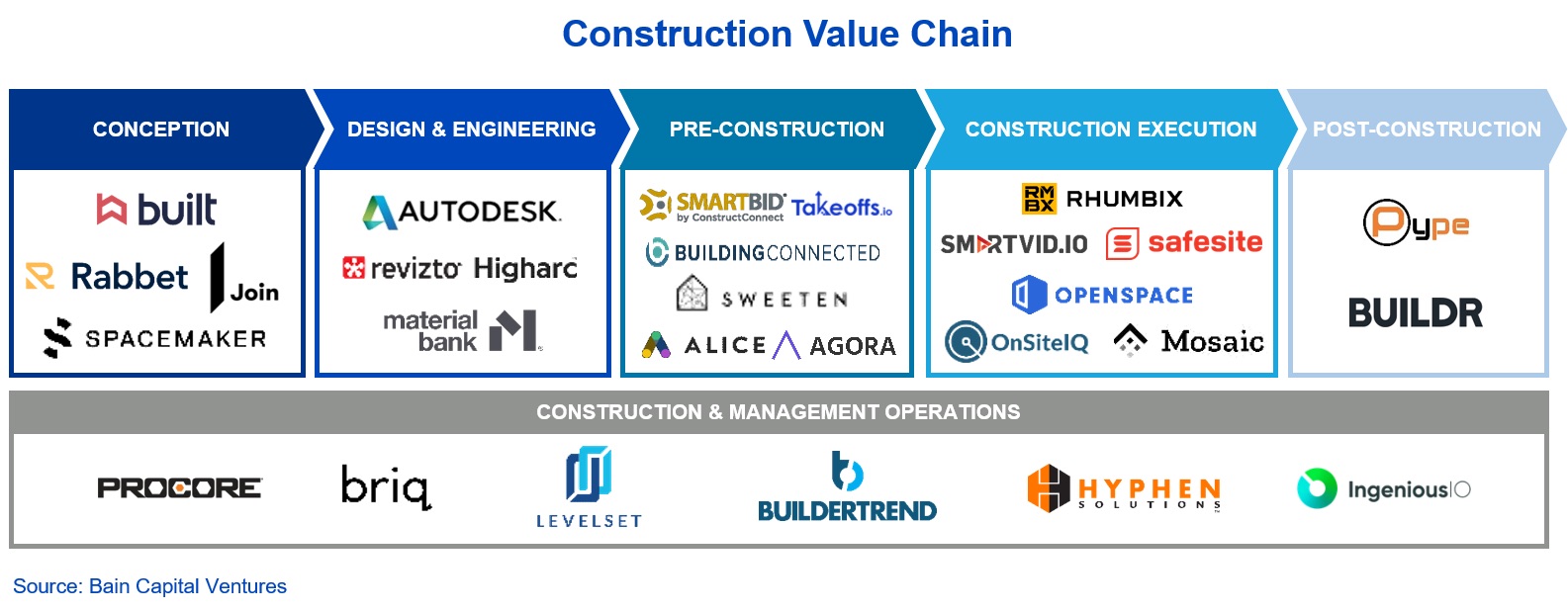Like many things in life, building great businesses is all about timing. We’ve seen multibillion dollar failures from the dot-com era such as Pets.com and Webvan be reincarnated a decade later as Chewy and Instacart — this time as runaway successes.
The same could be said about real estate technology companies, but startups in this category have not gotten the same opportunity and attention as their peers in other sectors.
For decades, proptech has received the short end of the stick. Real estate is the world’s largest asset class worth $277 trillion, three times the total value of all publicly traded companies. Still, fintech companies have received seven times more VC funding than real estate companies.
These lower levels of investment were previously attributed to the slow rate of technology adoption and digitalization within the real estate industry, but this is no longer the case. Companies in real estate are adopting innovation faster than ever. Now, 81% of real estate organizations plan to use new digital technologies in traditional business processes and spending on tech and software is growing at over 11% per year. Technological adoption has even accelerated throughout the pandemic as enterprises were forced to quickly adapt.
Historically, the strength or weakness of the broader economy and the real estate industry have been tightly coupled and correlated. While some may point to COVID-19’s negative impact on certain parts of real estate as evidence that proptech can only thrive in boom times, I believe building a successful proptech company is less about anticipating economic upswings and markets and more about timing and taking advantage of the right technological trends. In short, this is as good of a time as any to start a proptech company if you know where to look.
History is littered with examples of companies that have done just this. Let’s take a look at three:
Procore
- Founded: 2002.
- Early traction: Used by celebrity housing projects in California.
- Inflection point: 2012 (people start using iPads and smartphones on job sites).
- Today: $5 billion valuation as of May 2020.
Procore was founded in 2002 in the aftermath of the dot-com bust, well before widespread WiFi and five years before the iPhone. The company saw the capability for software and technology to transform the construction industry long before practitioners did. Its team faithfully and stubbornly kept at it through the financial crisis, but only had $5 million in revenue by 2012. Here’s where the timing kicks in: At this time, iPads and smartphones had become more common on worksites, enabling widespread adoption.
Realizing this change in-market and adapting to it, Procore strategically priced its product as a subscription, rather than based on headcount, as was typical in the industry. In this way, early customers like Wieland and Mortenson got their subcontractors and temp employees to use the product, which then created a flywheel effect that spread Procore to other projects and clients. Fast forward to today, Procore now has more than $290 million in ARR and is valued over $5 billion.
Procore’s persistence and agility ultimately enabled it to capitalize on the right technological trends and shifts, despite what initially seemed like a poorly timed decision to start a software company in a recession. Procore is now on a venture exit path as it continues to acquire new-age proptech companies like Avata Technologies, Honest Buildings and BIMAnywhere.
Zillow
- Founded: 2006.
- Early traction: Launched with 1 million website visits.
- Inflection point: 2009 (financial crisis mindset).
- Today: Public — $27 billion market capitalization.
Zillow was founded by the co-founders of Hotwire and Expedia. While that might not seem relevant, the vision to bring transparency to consumers is the connecting line, the mission being to provide access to siloed data and knowledge to previously convoluted industries. Before Zillow, homeowners did not know how much their house was worth. With Zillow’s Zestimate, consumers can put a price tag on every roof across North America.

 clinical trials
clinical trials